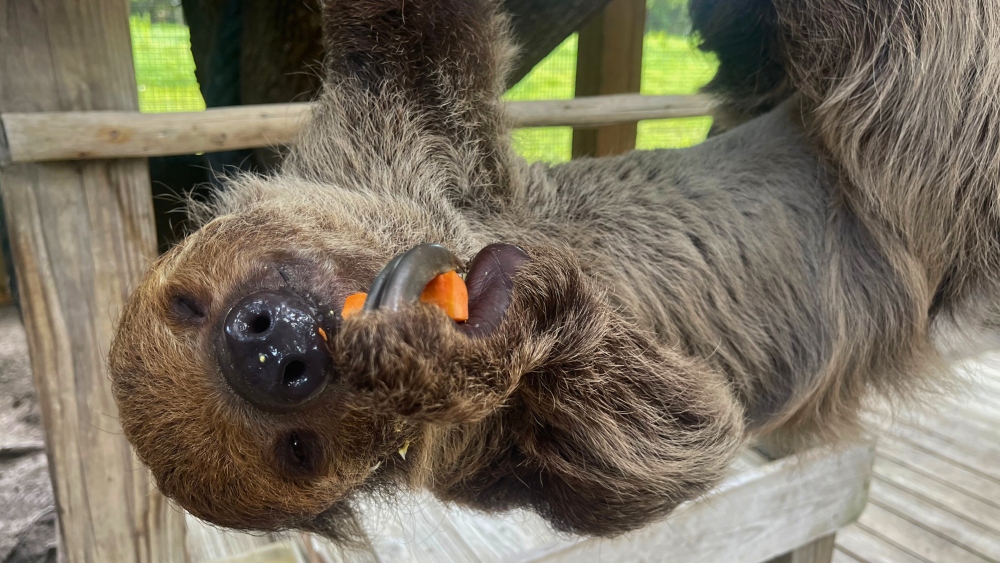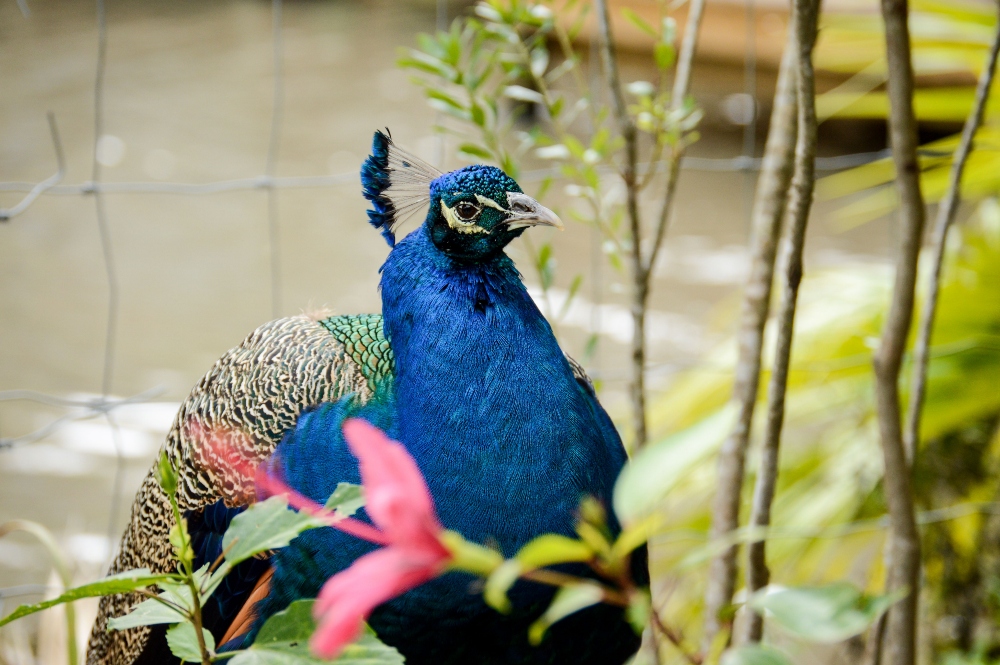An airboat ride through the Headwaters of the Florida Everglades offers a thrilling chance to observe Florida’s wildlife. In addition, visitors to Wild Florida’s Gator Park can see a variety of animals from around the world and those rescued in Central Florida. Many Floridians are familiar with the animals in the Gator Park, but there is always something new to learn when visiting Wild Florida. Discover these six surprising facts during your visit for those curious about the park’s residents.
It’s normal for algae to grow on sloths.

It’s normal and not uncommon to see green algae growing on sloths. While it may appear they missed a spot while taking a bath, the algae benefits them. Sloths move so slowly that the algae and fungi have enough time to grow on their long hair while hanging from a tree. According to researchers, sloths may use the algae to feed their young. Therefore, seeing green algae growing on a sloth’s back like Guy, on of the two-toes sloth you can meet at Wild Florida, is normal and nothing to worry about.
Ring-tailed lemurs cannot grip with their tails.
The ring-tailed lemur is a primate species known for its distinctive long and bushy tail. Some even possess tails longer than their bodies. Unlike some other primates, ring-tailed lemurs do not use their impressive tails for gripping. Instead, they rely on their tails for balance when sitting in trees or protecting their young. However, their opposable thumbs compensate for their lack of gripping ability.
Plants and animals in the Everglades are interdependent.
Interdependence refers to the mutual dependence of different organisms on one another’s activities. This natural phenomenon often leads to surprising interactions between animals. For instance, the plover bird is known to pick bits of food from the teeth of crocodiles. While this may seem complicated, both animals benefit from this symbiotic relationship. The plover bird gets a meal, while the crocodile enjoys a thorough dental cleaning.
Peacocks can fly.

Peafowl, the exotic and striking birds, are known for their vibrant colors and unique appearance. The males are called peacocks, while the females are called peahens. Despite the common name, the peacock is only applicable to male birds. These beautiful birds freely wander through the Wild Florida Gator Park, offering visitors unexpected encounters, leaving them delighted when they witness them taking flight. Peafowl cannot soar for extended periods or long distances but can ascend quickly when they need to escape a predator.
The Everglades is home to over 60 endangered or threatened species.
The gopher tortoise, Everglades snail kite, and Florida panther are a few endangered wildlife that call the Everglades home. The American alligator is a threatened species that can also be spotted on Wild Florida property. Wild Florida is dedicated to providing these animals with a safe and positive environment so they will no longer be on the endangered and threatened list one day.
During a family vacation to Wild Florida, visitors can stroll through the Gator Park after an exciting airboat ride, seeing all the sights and sounds of Central Florida. So take in the warm sunshine and marvel at the impressive alligators. As you explore the park, test your family’s knowledge by quizzing each other with fun facts. Whether it’s learning about their habitats, behaviors, or unique physical features, there’s always something new to discover at Wild Florida‘s Gator Park.